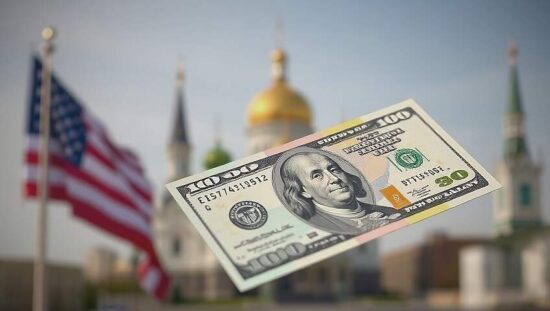The Russian ruble has broken through the psychologically important threshold of 81 against the US dollar, reaching its highest level since June 28, 2024. The driving force behind the exchange rate is the rising price of crude oil and growing hopes for a rapprochement between Moscow and Washington.
At 9:00 GMT, the ruble was 1.5 percent stronger at 80.90 per US dollar. Against the euro, the rate stood at 92.00, a level last seen in the summer of 2023. Trading volume was low ahead of the Easter holiday. The Brent crude oil, Russia’s most important export product, increased by about three percent the previous day.
Since the beginning of the year, the ruble has gained more than 40 percent against the dollar, making it the world’s strongest currency so far, even surpassing gold in performance. Factors contributing to this include a robust trade surplus, interest rate hikes by the central bank and speculation on an imminent end to the Ukrainian war.
Even a recent warning from US Secretary of State Marco Rubio, who said President Donald Trump does not rule out a failure of peace negotiations in the coming days, has not dampened optimism in the foreign exchange markets so far.
The ruble also gained against the Chinese yuan, the most important foreign currency in Russia’s foreign trade and subject to interventions by the central bank, by 0.1 percent to 11.08.
The Russian central bank continues to pursue a restrictive monetary policy and raised the key interest rate to 21 percent to combat inflation-driven currency depreciation. The high interest rates act as a magnet for foreign investors, especially from so-called “friendly countries” thus supporting the ruble exchange rate.
The real effective exchange rate of the ruble rose by 7.1 percent in March compared to the previous month and by a total of 19.2 percent in the first quarter, according to the central bank. Meanwhile, imports decreased by 5 percent compared to the previous year, while Russian exporters exchanged 25 percent more foreign exchange earnings in rubles.
The trade surplus in the first two months of the year amounted to about $18.5 billion, an increase of 15 percent compared to the previous year.
Strong ruble – a double-edged sword
A strong ruble strengthens confidence in the Russian economy but also represents a burden on the state budget. Oil and gas revenues are in US dollars, while the federal budget is conducted in rubles. Thus, a strong ruble means fewer rubles per dollar spent.
The Ministry of Finance has recently admitted that the desired budget deficit of 0.5 percent of GDP this year may not be achievable.
Despite these risks, the ongoing exchange rate increase signals stability and market confidence for now. However, in the long run, a strong currency could exacerbate fiscal policy conflicts.
More on the topic – Paris: USA, the UK and France negotiate over Ukraine.





